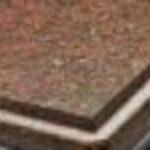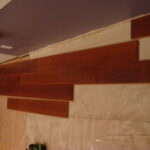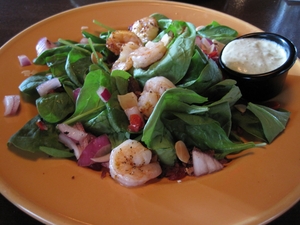Forty or so years ago, our parents were pretty limited in their choices when it came to replacing the kitchen counter. The options were pretty much limited to stainless steel, tile, laminate and not much else.
Today’s homeowners have a much wider range of products to choose from. In addition to the more traditional surfaces of our parent’s generation, homeowners can choose from manufactured products such as Silestone and Corian, marble, stone, natural granite or granite tile.
Shopping for a new kitchen counter is a pretty exhausting experience. In addition to the dozens of product lines, there are also hundreds of colors and textures. How does one choose? Budget limitations certainly narrowed the field for us, as well as the style of the home and how intensively the counter would be used. Having had experience with both stainless steel, tile, and Formica counter tops, we were interested in a product that was maintenance free, scratch & stain resistant, and kid tough. Silestone seemed to fit the bill.
What is Silestone?
We first noticed Silestone in the show room of a local masonry store. Unlike granite and other stone products, Silestone had a warmth to the surface that was lacking in other products. With the kitchen being the focus of activity in our home, having a cheery and inviting countertop was important to us.
We learned from the dealer that Silestone was regarded as the world’s leading quartz surface. It’s made of a blend of 93% quartz and 7% resins to create a non porous, dense counter top material. It has the look of natural stone, but doesn’t require sealing and is superior to granite when it comes to a greater heat, scratch, and stain resistance. Best of all, the non porous surface cleans easily with warm soap and water which makes Silestone practically maintenance free.
Because Silestone is an engineered product, the colors are evenly distributed along the counter, unlike stone and granite products.
How does Silestone compare price wise?
Silestone is not inexpensive; with installation, the product can run anywhere from $55 to $85 a square foot which includes a standard edge profile. Extra details, such as fancier profiles and prepping the counter for sink and faucet installation do add significantly to the overall cost of installation.
Slab granite ranges anywhere from $10 to $75 per square foot installed. For the do-it-yourselfer, twelve inch granite tile is significantly less expensive, beginning at $6 per tile.
Corian and other solid surface counters such as Avonite and Swanstone run between $35-85 per lineal foot. This does not include installation, which apparently must be done by specially trained and certified contractors.
Ceramic, glass, and porcelain tile continue to be a popular kitchen countertop choice. With improved installation techniques, there seems to be less uneveness and problems with grouting. Tile installation costs begin somewhere around $20 a square foot and can run as high as $60, depending on the quality of the tile.
Plastic laminate, sometime referred to by the trade name of Formica, costs on average between $13 to $25 installed; post formed countertops for the do-it-yourselfer are half the price.
Why did we choose Silestone?
Despite having a limited budget, we decided to go with Silestone for its durability, warm appearance, and easy maintenance.
Silestone appeared to be the clear leader when it came to a product that was stain, heat and scratch resistance. And, for those of us who practically live in the kitchen, we know from experience that certain types of counter tops are easily damaged from spills, carelessly placed tea kettles, and kids baseball cleats.
The non porous surface and easy maintenance were also important. Unlike tile and granite surfaces, mold and mildew can’t find a toe hold on Silestone.
We were also impressed with the wide range of colors and styles, plus the consistent, even color of the product. Silestone counters are very natural looking, and don’t have the shiny reflective surface that can show fingerprints and crumbs. Silestone is also backed with a 10 year warranty, which is something that neither laminate nor granite countertops offer.
If Silestone has one downside, we understand this product will fade from prolonged exposure to UV rays coming through the kitchen or dining room windows. Since our cottage has Energy Star windows with a low e rating to prevent ultraviolet light from entering the home, this wasn’t an issue for us, but certainly can be for others.
Silestone may be more expensive than typical countertops, but looks beautiful, is easy to maintain, and adds a richness to the kitchen that can’t be achieved with other products. The full selection of Silestone products are available through most masonry and tile stores, with limited selections available through Home Depot and Lowe’s.







